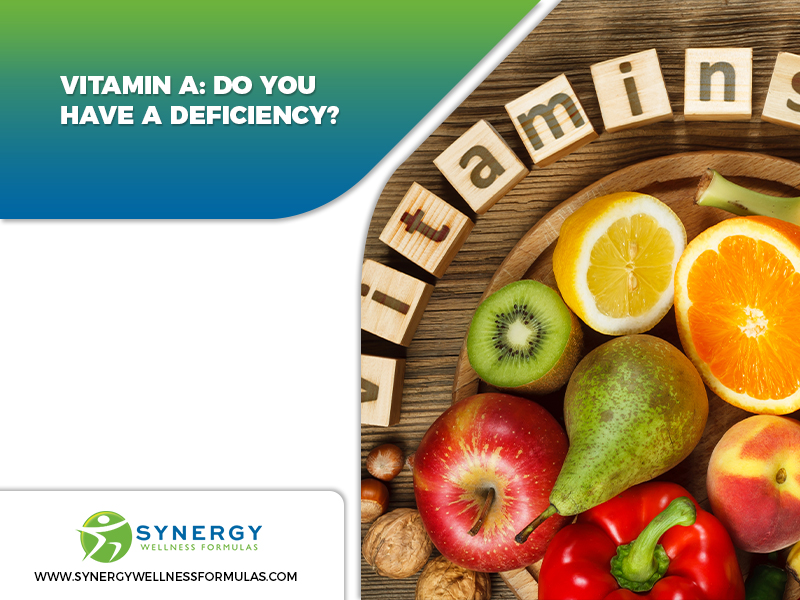Vitamin A: Do You Have A Deficiency?
What Vitamin A Is
The discovery of vitamin A can be traced back to 1913 when biochemist Elmer McCollum examined rats that had developed a condition known as “night blindness.” His experimentation led him to determine that they were lacking a certain substance in their diet, which he named “fat-soluble A.” It wasn’t until later that vitamin A was fully understood and its role in human nutrition and health recognized. In 1931, researchers successfully isolated the compound and determined its chemical structure.
Vitamin A is necessary for maintaining the health of the immune system, skin, and eyes; it also helps with cell growth and reproduction. Today, vitamin A is available as a supplement and added to many fortified foods, such as cereal and milk. It’s critical to note that excessive doses of vitamin A can be toxic; it’s best to aim for getting enough through dietary sources rather than relying solely on supplementation.

Vitamin A Deficiency
Vitamin A deficiency is a serious global health concern, affecting approximately 190 million preschool-aged children. Symptoms include dry eyes, reduced immune function, and impaired vision, which can lead to blindness. Long-term consequences can include an increased risk of mortality and morbidity from infections, like pneumonia and diarrhea.
The primary cause of vitamin A deficiency is an inadequate dietary intake, particularly in regions where individuals rely heavily on a limited variety of starchy staples, such as cassava or maize. However, inadequate absorption and utilization can also contribute to deficiency. Diagnosis typically requires biochemical testing, but marginal deficiency may be assessed through physical signs, like keratinization of the skin or conjunctiva.
Treatment involves increasing dietary intake through foods rich in vitamin A or supplementation with synthetic retinoids. Prevention remains key in reducing the burden of this preventable condition. Improving access to diverse foods, addressing poverty and food insecurity, and increasing education on nutrition are crucial steps toward eradicating vitamin A deficiency.

Top 10 Vitamin A Foods
When it comes to obtaining essential vitamins and minerals, it’s vital to have a diverse diet. Vitamin A, in particular, is important for maintaining good vision, a strong immune system, and healthy skin. Here are the top ten sources of vitamin A to incorporate into your diet.
- Carrots – just one cup of raw carrots provides more than 200% of the recommended daily intake (RDI) of vitamin A.
- Sweet potatoes – one medium sweet potato offers over 400% of the RDI of vitamin A.
- Kale – one cup of cooked kale contains an impressive 1088% RDI of vitamin A.
- Red bell peppers – though not as high in vitamin A as dark leafy greens, one cup of cooked red bell peppers still provides 28% RDI.
- Cantaloupe – just one cup of this juicy fruit offers over 50% RDI of vitamin A.
- Spinach – not only is spinach high in vitamin A but it’s also packed with other nutrients, such as iron and calcium. One cup of cooked spinach offers over 200% RDI of vitamin A.
- Dried apricots – just ten dried apricot halves provide 50% RDI of vitamin A.
- Eggs – one large hard-boiled egg offers six percent RDI of vitamin A.
- Fortified cereal – many breakfast bowls of cereal are fortified with multiple essential vitamins and minerals, including vitamin A. Check the nutrition label to see exactly how much each serving provides.
- Cheddar cheese – one ounce of cheddar cheese offers five percent RDI of vitamin A.
Overall, variety is key when it comes to obtaining essential nutrients, like vitamin A. Remember that! Aim to incorporate a balance of different foods from this list into your daily meals and snacks.

Benefits Of Vitamin A
Did you know that vitamin A is crucial for a healthy immune system, cell growth, and vision? It’s true – this powerhouse nutrient also plays a role in reproductive health and contributes to the health of our skin and hair. Let’s take a closer look at the top eight benefits of vitamin A.
- Boosts immunity: Vitamin A helps white blood cells function properly, keeping our bodies protected from illness and infection.
- Supports cell growth: Vitamin A promotes healthy cellular growth in various tissues throughout the body, including the skin and organs.
- Maintains eye health: Adequate vitamin A intake helps prevent dry eyes and night blindness. It also helps protect against macular degeneration, a leading cause of vision loss in older adults.
- Pregnant mothers need it: Expecting mothers who do not consume enough vitamin A are at risk of birth defects that affects their baby’s brain and spine.
- Keeps the skin looking youthful: Vitamin A helps maintain a healthy complexion by promoting cell turnover for smooth, radiant skin.
- Promotes reproductive health: This vitamin is crucial for normal reproductive function in both males and females.
- Maintains strong bones: Vitamin A supports bone growth and helps regulate calcium levels in the body to prevent osteoporosis.
- Helps with hormone regulation: Vitamin A keeps glands functioning properly, which is crucial for maintaining hormonal balance throughout the body.
Eat foods rich in vitamin A, such as sweet potatoes, carrots, kale, spinach, apricots, feed-fortified cereals, dairy products, and eggs, or take a supplement. This can help ensure that you’re getting enough of this vital nutrient to reap its many benefits. Note – always consult your healthcare provider before starting any new supplement regimen.

How To Get More Vitamin A
There are plenty of delicious ways to ensure that you’re getting enough in your diet. One easy option is to incorporate more colorful fruits and vegetables into your meals – think sweet potato, carrots, kale, cantaloupe, and red bell peppers. Another option is to add liver or cod liver oil to your diet.
These options might sound intimidating at first, but they can easily be incorporated into everyday meals; for example, try roasting chopped sweet potato and carrots as a side dish or adding steamed kale to a sandwich or wrap. As for liver and cod liver oil, both can be easily added as a topping for salads or mixed into a smoothie. Don’t forget about other sources of vitamin A, such as dairy products and fortified cereals. By incorporating these various options into your daily routine, you’ll ensure that you’re getting enough vitamin A for optimum health. For inspiration, here are some ideas.
Try some scrambled eggs with wilted spinach and diced red bell pepper or a quick quinoa bowl with roasted sweet potato, black beans, and a drizzle of avocado or salsa for added flavor and vitamin A.
Another easy way to increase your vitamin A intake is by whipping up this quick smoothie – blend one cup of frozen mango chunks, one cup of spinach leaves, and 1/2 cup of unsweetened almond milk until smooth. Yum!
And for breakfast or an afternoon pick-me-up, try making these tasty avocado toast bites – spread mashed avocado onto whole wheat bread rounds and top with thinly sliced red bell pepper strips.
Mix diced carrots and sweet potatoes into your favorite soup or casserole dish, or try a salad topped with sliced cantaloupe, spinach leaves, and feta cheese. Remember that cooking can decrease the amount of vitamin A in these foods, so aim to have some raw or lightly steamed options each day.

Vitamin A Risks And Side Effects
All vitamins and nutrients, including vitamin A, have the potential for side effects if consumed in excess. The recommended dietary allowance for vitamin A is 900 mcg/day for adult men and 700 mcg/day for adult women, and consuming more than three times this amount can lead to symptoms, such as nausea, headaches, dizziness, and liver damage.
It is critical to note that large doses of preformed vitamin A (found in animal products, like liver and fish oils) pose a greater risk of toxicity than plant sources of pro-vitamin A (such as carrots and leafy greens). Additionally, excessive vitamin A can interact with certain medications, such as anti-seizure drugs and blood thinners. As with any supplement or nutrient, it’s best to consult a healthcare professional before taking high doses of vitamin A. Taking care to consume a balanced diet that includes vitamin-rich fruits and vegetables is the safest way to ensure adequate intake of this essential nutrient.

Now that you know all about vitamin A, be sure to incorporate foods rich in this nutrient into your diet to enjoy its many benefits! Vitamin A is an essential nutrient that plays a critical role in maintaining vision, immune function, and reproductive health. While our bodies can produce vitamin A from scratch, we need to consume it through our diets to ensure that we’re getting enough of this vital nutrient. Foods like carrots, sweet potatoes, kale, apricots, and eggs are all excellent sources of vitamin A. Adding these foods to your diet or taking a supplement can help ensure that you’re getting enough of this important nutrient; however, it’s important to consult with a healthcare professional before taking any supplements, as large doses of vitamin A can cause side effects if not consumed properly.











